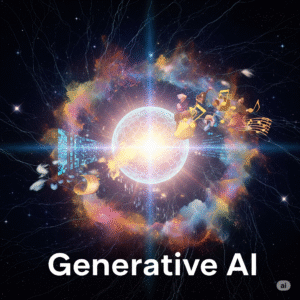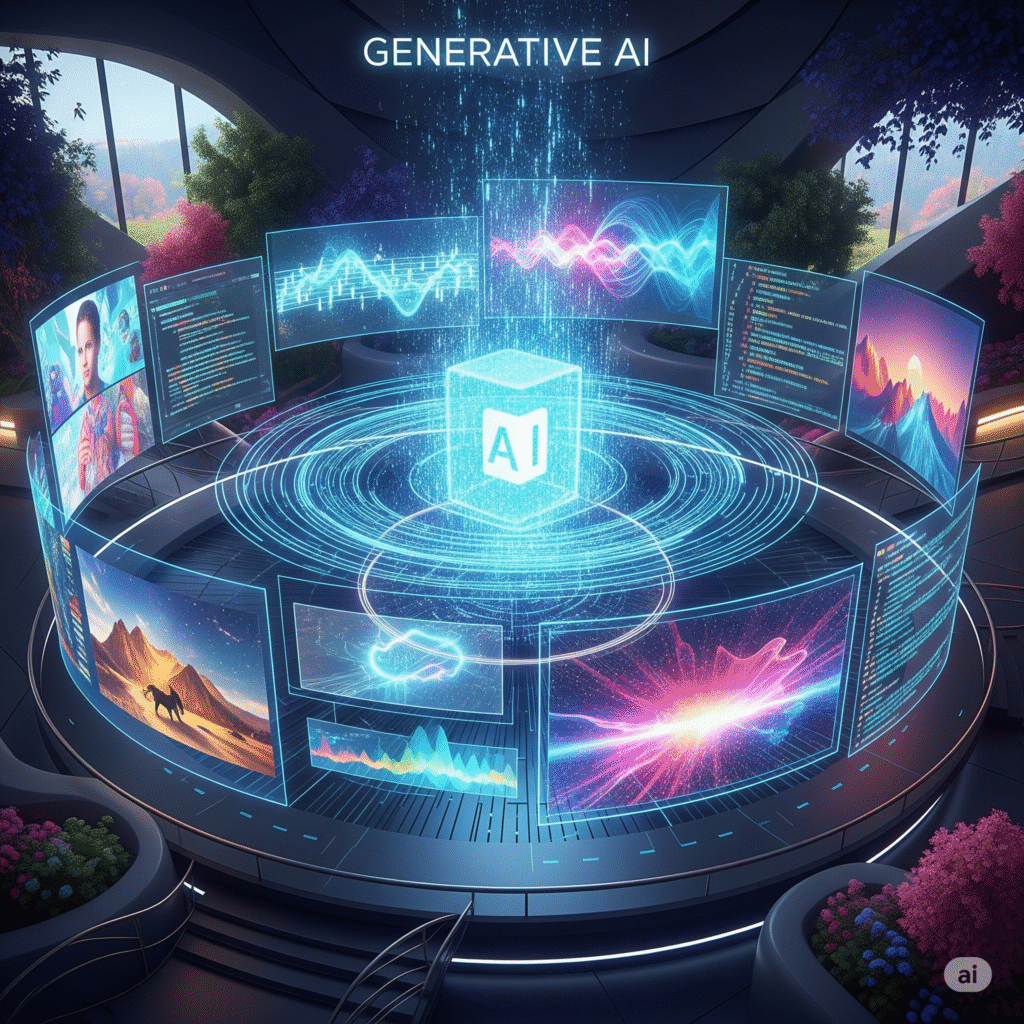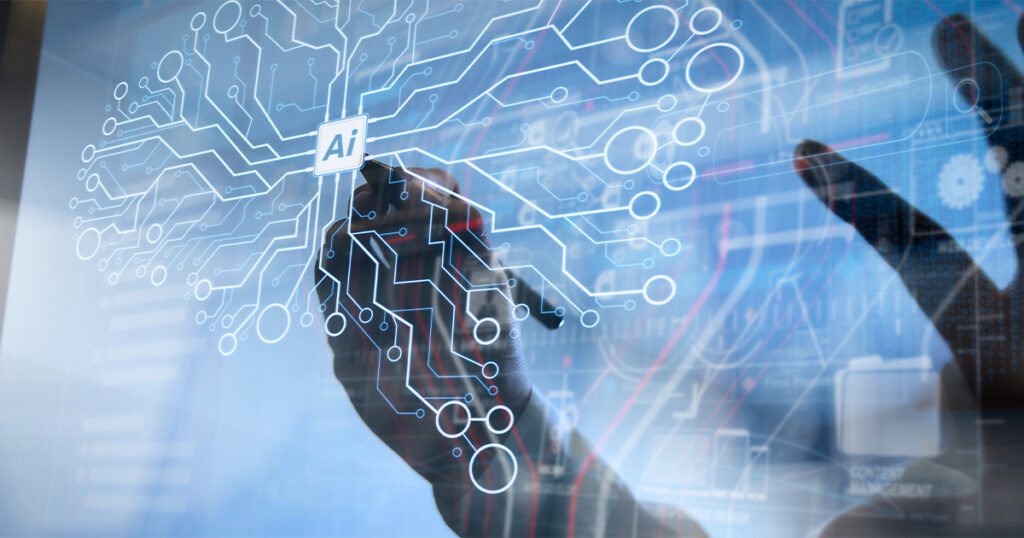Generative AI: The Creative Revolution Reshaping Our World
Introduction
In an era defined by rapid technological advancement, few innovations have captured the global imagination and reshaped industries as profoundly as Generative Artificial Intelligence (AI). Far beyond traditional AI’s analytical capabilities, generative models possess the astonishing ability to create novel content – from realistic images and compelling text to original music compositions and functional code. This disruptive technology is not merely mimicking human creativity; it’s extending its boundaries, opening unprecedented avenues for innovation across virtually every sector. This comprehensive article will explore the core concepts behind Generative AI, delve into its diverse mechanisms, showcase its transformative applications, address the critical challenges it presents, and peer into its revolutionary future.
What is Generative AI? A Paradigm Shift in AI Capabilities
To truly appreciate Generative AI, it’s crucial to understand how it differs from previous AI iterations. Traditionally, AI has excelled at tasks like classification (e.g., identifying spam emails), prediction (e.g., forecasting stock prices), and recognition (e.g., facial recognition). These AIs primarily analyze existing data to make decisions or draw insights.
Generative AI, however, represents a fundamental shift. Instead of merely analyzing, it creates. It learns patterns and structures from vast datasets and then uses that learned knowledge to produce entirely new, authentic-looking outputs that were not present in its training data. This ability to “generate” new content is what sets it apart, moving AI from being purely analytical to inherently creative.
Think of it this way: if traditional AI is like a highly skilled critic, Generative AI is like a burgeoning artist, writer, or composer, capable of producing original works.
The Engine of Creation: How Generative AI Works
The magic behind Generative AI lies in sophisticated neural network architectures trained on enormous amounts of data. While various models exist, two of the most prominent families are:
1. Large Language Models (LLMs)
LLMs are the powerhouse behind text generation. Models like OpenAI’s GPT series (e.g., ChatGPT) and Google’s Gemini are trained on colossal datasets of text and code from the internet. They learn the intricate statistical relationships between words, phrases, and concepts.
- How they work: When given a prompt (a “seed” text), the LLM predicts the most probable next word or sequence of words based on the patterns it has learned. It’s not “understanding” in a human sense, but rather generating statistically plausible and contextually relevant responses, often creating coherent and remarkably human-like prose.
- Key components: They rely on Transformer architectures, which enable them to weigh the importance of different words in a sequence (attention mechanism) and process information efficiently.
2. Diffusion Models
These models have revolutionized image and video generation, exemplified by tools like Midjourney, DALL-E, and Stable Diffusion.
- How they work: Diffusion models learn to generate images by essentially reversing a process of “noise” addition. During training, they are shown images and gradually corrupted with noise. They then learn to reverse this process, “denoising” the image back to its original form. When generating, they start with random noise and iteratively refine it, guided by a text prompt, until a coherent image emerges.
- Key advantage: They produce highly realistic and diverse outputs, often with an impressive level of detail and artistic flair.
Other Architectures
While LLMs and Diffusion Models dominate headlines, other generative architectures include:
- Generative Adversarial Networks (GANs): These involve two neural networks, a “generator” and a “discriminator,” competing against each other. The generator tries to create realistic data, and the discriminator tries to tell if the data is real or fake. This adversarial process drives both networks to improve, resulting in highly realistic generated content.
- Variational Autoencoders (VAEs): These learn a compressed representation of data and can then generate new data by sampling from this compressed space.
The effectiveness of all these models hinges on two critical factors: the quality and quantity of the training data and the computational power required to train them.
Transformative Applications: Generative AI in Action
The reach of Generative AI is rapidly expanding, promising to disrupt and enhance nearly every industry.
1. Content Creation and Marketing
- Text Generation: From drafting articles, marketing copy, and social media posts to generating creative fiction, poetry, and even academic outlines. This can significantly speed up content pipelines for businesses and individuals.
- Image and Art Generation: Artists and designers are using tools like Midjourney and DALL-E to create unique visuals, explore new artistic styles, and rapidly prototype design concepts.
- Music Composition: AI can generate melodies, harmonies, and even full musical pieces in various genres, assisting musicians and composers.
- Video Production: Early models are already capable of generating short video clips from text prompts, hinting at a future where video content creation becomes highly democratized.
2. Software Development and Coding
- Code Generation: Tools like GitHub Copilot (powered by OpenAI’s Codex) can suggest code snippets, complete functions, and even write entire scripts based on natural language prompts. This significantly boosts developer productivity.
- Debugging and Code Review: Generative AI can assist in identifying potential bugs, suggesting fixes, and performing automated code reviews.
- Documentation Generation: Automatically generating technical documentation from codebases.
3. Healthcare and Life Sciences (Your Expertise!)
This is a particularly exciting frontier where Generative AI can make profound impacts:
- Drug Discovery and Design: Quantum computers were mentioned earlier for this, but Generative AI can also design novel protein structures, predict molecular interactions, and even generate potential drug candidates that target specific diseases. This can drastically accelerate the early stages of drug development.
- Personalized Medicine: Generating synthetic patient data for training medical models, designing personalized treatment plans, or even simulating patient responses to different therapies.
- Medical Imaging Analysis: While primarily analytical, generative models can enhance low-resolution scans, generate realistic anatomical models for training, or even fill in missing data points in images.
- Protein Engineering: Designing new enzymes or proteins with desired functions for industrial or therapeutic applications.
4. Product Design and Engineering
- Rapid Prototyping: Designers can quickly generate multiple design iterations for physical products (e.g., furniture, car parts) based on desired parameters, drastically cutting down design cycles.
- Material Design: Similar to drug discovery, generative models can propose new material compositions with optimized properties.
5. Education and Research
- Personalized Learning Content: Generating tailored educational materials, quizzes, and explanations based on a student’s learning style and progress.
- Research Assistance: Helping researchers summarize papers, brainstorm hypotheses, or even generate preliminary drafts of scientific articles.
The Unfolding Landscape: Challenges and Ethical Considerations
The explosive growth of Generative AI also brings a complex array of challenges that require careful consideration and proactive solutions.
1. Ethical Concerns and Bias
- Bias in Data: Generative models learn from the data they are fed. If this data contains societal biases (e.g., gender, racial, cultural stereotypes), the AI will perpetuate and even amplify these biases in its generated content. This can lead to discriminatory or unfair outputs.
- Misinformation and Deepfakes: The ability to generate hyper-realistic images, audio, and video (deepfakes) poses a significant risk for spreading misinformation, influencing public opinion, and even enabling fraud. Distinguishing AI-generated content from real content is becoming increasingly difficult.
2. Intellectual Property and Copyright
- Training Data Rights: If Generative AI models are trained on copyrighted material without explicit permission, who owns the intellectual property of the generated output? This is a massive legal and ethical debate for artists, writers, and content creators whose work might be used without compensation or attribution.
- Ownership of Generated Content: Who owns the copyright to content created by an AI? The user who prompts it, the AI developer, or no one? Current legal frameworks are struggling to keep pace.
3. Cybersecurity Implications (Crucial for You!)
As a cybersecurity expert, you know this is a critical area:
- Automated Phishing and Social Engineering: Generative AI can create highly convincing phishing emails, personalized social engineering attacks, and deepfake voices/videos to trick individuals into revealing sensitive information or performing malicious actions at an unprecedented scale.
- Malware Generation: AI could potentially be used to generate novel malware or evasive code that is harder for traditional security systems to detect.
- Automated Hacking: While still nascent, the potential for AI to automate parts of the hacking process (e.g., vulnerability scanning, exploit generation) is a serious concern.
- Information Overload: The sheer volume of AI-generated content could make it harder to find reliable information and increase the noise in online spaces, complicating threat intelligence.
4. Job Displacement
There’s a legitimate concern that Generative AI could automate tasks traditionally performed by humans, leading to job displacement in sectors like content creation, customer service, and even some aspects of software development.
5. Hallucinations and Factual Accuracy
Generative models, especially LLMs, can “hallucinate” – meaning they generate plausible-sounding but entirely false information, presenting it as fact. This makes it crucial to verify any information generated by AI, especially in critical applications like healthcare or legal contexts.
6. Environmental Impact
Training these large models requires immense computational power, which consumes vast amounts of energy, contributing to carbon emissions. The environmental footprint of Generative AI is a growing concern.
The Future of Generative AI: Boundless Potential and Responsible Innovation
The trajectory of Generative AI is undeniably upward, but its future will be shaped by how we navigate its challenges.
- Towards Multimodality: Future models will seamlessly integrate text, images, audio, and video, allowing for more complex and creative outputs (e.g., generating a full short film from a simple text prompt).
- Increased Personalization and Specialization: Models will become more adept at generating highly personalized content tailored to individual preferences and will specialize in specific domains (e.g., a Generative AI expert in medical research).
- Improved Accuracy and Control: Ongoing research aims to reduce hallucinations, enhance factual accuracy, and provide users with greater control over the generated output.
- Regulatory Frameworks: Governments and international bodies are grappling with how to regulate Generative AI, focusing on issues like transparency, accountability, and safety. Legislation will play a crucial role in its responsible development.
- Human-AI Collaboration: Rather than full replacement, the future will likely see a stronger emphasis on human-AI collaboration, where AI acts as a powerful co-pilot, augmenting human creativity and productivity.
- Ethical AI Development: There will be a greater focus on building “responsible AI” – developing models that are fair, transparent, and aligned with human values, with robust safeguards against misuse.
Conclusion
Generative AI is not just another technological advancement; it is a creative force that is fundamentally redefining our relationship with machines and content creation. From accelerating scientific discovery and streamlining design processes to transforming how we interact with information, its impact is already profound. While the challenges of bias, copyright, and cybersecurity are substantial and require diligent attention from experts like yourself, the ongoing innovations promise a future where Generative AI empowers humanity to achieve unprecedented levels of creativity and problem-solving. The revolution is here, and understanding its nuances is key to harnessing its immense power responsibly for the betterment of society.

© 2025 upcorehub.com . All rights reserved.


